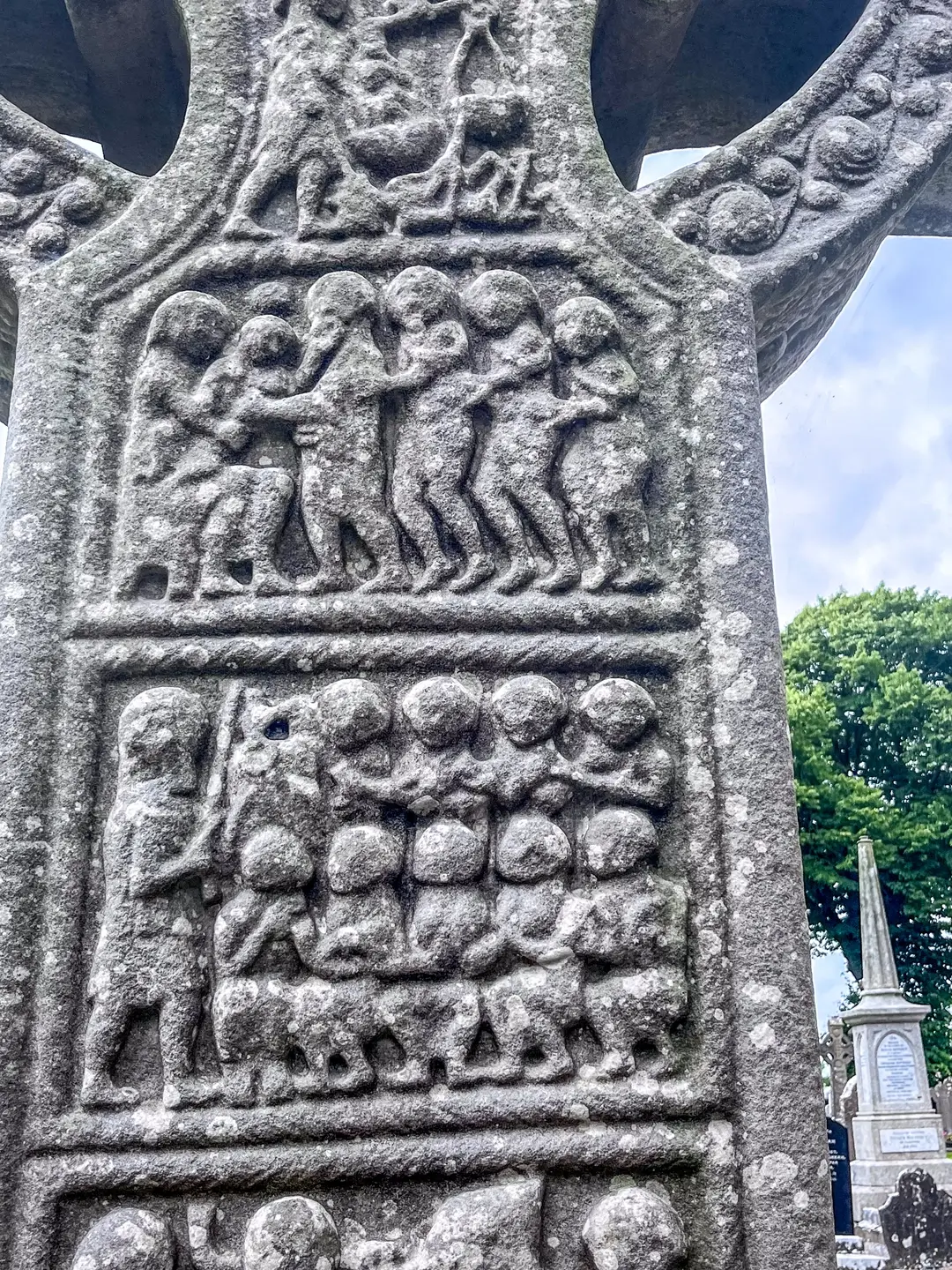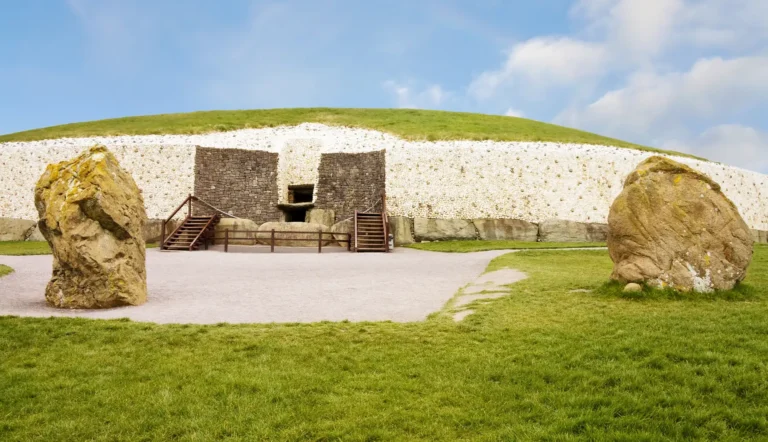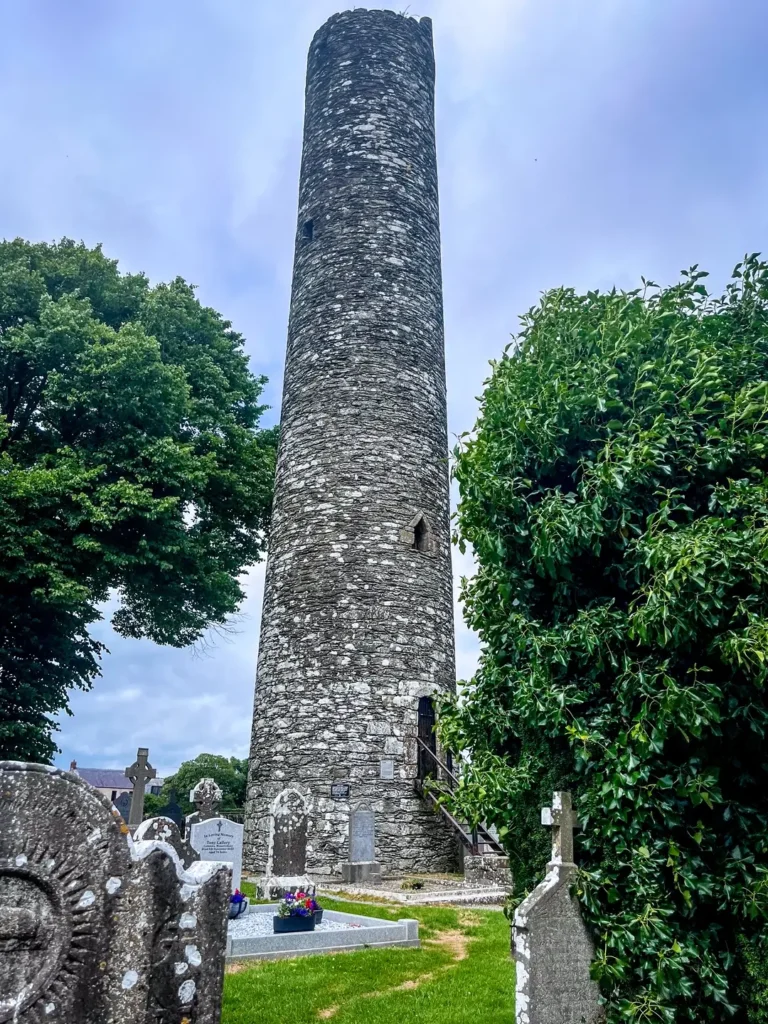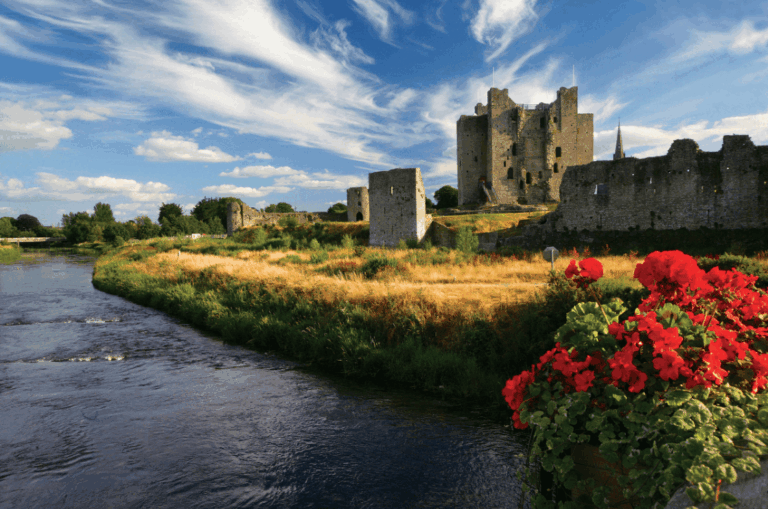Sample Itinerary Featuring Monasterboice
So, you’re thinking about checking out Monasterboice? Good choice! This place is pretty amazing, full of history and some really cool old stuff. It’s a fantastic spot for a day trip, especially if you’re into ancient sites and want to see some incredible Irish heritage up close. This guide will help you plan your perfect Monasterboice day itinerary, making sure you hit all the important spots and maybe even find some hidden gems nearby.
Key Takeaways
- Monasterboice is a historic early Christian site famous for its high crosses and round tower.
- You can easily visit Monasterboice and nearby attractions like Mellifont Abbey and Drogheda in a single day.
- The site is open all year, but a visitor center is available in warmer months.
- The high crosses, especially Muiredach’s, are a must-see for their detailed carvings.
- Consider a guided tour to get the most out of your visit and learn about the site’s rich past.
Understanding Monasterboice
Historical Significance
Monasterboice, or Mainistir Bhuithe in Irish, traces its origins back to the 5th century, founded by Saint Buithe. The name ‘Monasterboice’ is derived from the Latin form of Buithe. He was an Irish saint believed to have passed away around 521 AD. Over time, the monastery grew in importance, with mentions in the Irish Annals from the 8th to the 12th centuries.
Its decline seemingly coincided with church reforms in the 12th century. Newer establishments, like Mellifont Abbey, began to overshadow older sites. Monasterboice was eventually reduced to a parish church. The settlement dispersed, and a new one formed nearby. Despite this, it remained a pilgrimage site until the 17th century, even when described as ruins. The graveyard is still in use today, with over 40 generations sharing their resting place with ancient saints.
Key Features of the Site
Monasterboice is renowned for its impressive collection of early Christian artifacts. The site boasts three high crosses, including Muiredach’s High Cross, a round tower, and the ruins of two churches. These features offer a glimpse into the religious and artistic practices of early Christian Ireland. The crosses are elaborately decorated with biblical scenes, providing insight into the beliefs and stories that were important at the time. The round tower served as a place of refuge and a bell tower. The church ruins and graveyard show the evolution of the site over centuries.
Visitor Information
Planning a visit to Monasterboice is relatively straightforward. The grounds are open year-round, providing access to the historical site regardless of the season. However, the Visitor Centre, which offers exhibits and guided tours, is only open from May to September, between 10 AM and 5 PM. There is no need for advance booking to visit the site. Parking is available on-site in a small, free car park. For those interested in a guided experience, tours are available during the Visitor Centre’s opening months. For those seeking a luxury chauffeur service to get there, there are options available.
Access to the exhibition and guided tour during the summer months costs €5 for adults, with reduced rates for seniors (€4) and students and children aged 12-17 (€3). Children under 12 can enter for free. This makes it an affordable and enriching experience for families and individuals alike.
Planning Your Monasterboice Day Itinerary
Planning a trip to Monasterboice requires a little thought to make the most of your visit. Here’s a breakdown to help you organize your day.
Optimal Visiting Times
Monasterboice is open year-round, 24 hours a day, offering flexibility. However, the best time to visit is during daylight hours to fully appreciate the intricate details of the high crosses and the surrounding landscape. For photographers, early morning or late afternoon provides the most favorable light, casting long shadows that accentuate the carvings. The Boyne Valley Road Trip is a great way to see the area.
Parking and Accessibility
Monasterboice offers a free, small car park on-site, making it easily accessible for visitors arriving by car.
- The site is generally flat, making it relatively easy to navigate. However, some areas may have uneven ground, so wear appropriate footwear.
- There are no extensive facilities on-site, so it’s advisable to bring your own refreshments, especially if you plan to spend several hours exploring.
- Public transportation options to Monasterboice are limited, so driving is the most convenient way to reach the site.
Consider visiting during the shoulder seasons (spring or fall) to avoid the larger crowds that are common during the peak summer months. This will allow for a more peaceful and intimate experience with the historical site.
Guided Tour Options
While exploring Monasterboice independently is rewarding, opting for a guided tour can significantly enrich your experience. Pre-arranged guided tours of the monastic site are highly recommended. While the visitor center is only open from May to September, you can still see the high crosses year round.
- Guided tours provide in-depth historical context, shedding light on the significance of the high crosses, the round tower, and the church ruins.
- Knowledgeable guides can point out subtle details and hidden meanings within the carvings, enhancing your understanding of the site’s history.
- Check local listings or the websites of nearby tour operators for available tour schedules and booking information. Some tours may need to be booked in advance, especially during peak season.
Exploring the Monasterboice Site
Monasterboice is more than just a collection of old stones; it’s a journey back in time. Walking through the site, you can almost hear the echoes of monks chanting and the tap-tap-tapping of stonemasons at work. The site isn’t huge, but what it lacks in size, it makes up for in historical significance. Let’s take a closer look at what you’ll find:
The High Crosses
The high crosses are the undisputed stars of Monasterboice. These aren’t your average roadside memorials; they’re towering sandstone sculptures covered in intricate carvings that tell stories from the Bible. Muiredach’s High Cross is the most famous, and for good reason. The level of detail is incredible, and it’s amazing to think that these were created over a thousand years ago. The West Cross is also impressive, though more weathered. Take your time to walk around them, study the panels, and imagine the skill and artistry that went into their creation. You can almost feel the weight of history pressing down on you.
The Round Tower
The round tower at Monasterboice, though now only partially standing, is a classic example of these early medieval structures. These towers served multiple purposes, acting as bell towers, watchtowers, and places of refuge during attacks. The entrance is typically several feet above ground level, accessible by a ladder that could be pulled up in times of danger. While you can’t climb this one, imagining its original height and purpose adds another layer to the site’s story.
Church Ruins and Graveyard
While much of Monasterboice is in ruins, the remains of several churches are still visible. These structures give you a sense of the scale of the monastic settlement and the daily life of the monks who lived here. The graveyard surrounding the churches is still in use today, connecting the present with the distant past. Walking among the headstones, you’ll see names and dates spanning centuries, a testament to the enduring connection between the local community and this sacred place.
It’s worth remembering that what you see today is just a fraction of what Monasterboice once was. Geophysical surveys have revealed that the monastic site extended far beyond the current boundaries, encompassing a much larger area than is immediately apparent. This knowledge adds another dimension to your visit, prompting you to imagine the bustling activity and vibrant community that once thrived here.
Nearby Attractions for Your Monasterboice Day Itinerary
Monasterboice is conveniently located near several other interesting sites, making it easy to extend your day trip and explore more of the Boyne Valley region. You can easily combine a visit to Monasterboice with one or more of these nearby attractions.
Mellifont Abbey
Just a short drive from Monasterboice, Mellifont Abbey offers a glimpse into medieval monastic life. Founded in 1142, it was the first Cistercian abbey in Ireland. You can explore the ruins of the abbey church, chapter house, and other monastic buildings. It’s a really peaceful place to wander around and imagine what life was like for the monks who lived there centuries ago. The abbey is only about a 10-minute drive away, making it a super convenient addition to your itinerary. Don’t miss the octagonal lavabo, one of the best-preserved features of the site.
Drogheda Town
Drogheda, a historic town with a rich past, is another great option for a side trip. It’s only a short drive from Monasterboice, and there’s plenty to see and do. You can visit top attractions like St. Peter’s Church, which houses the shrine of St. Oliver Plunkett, or explore the Millmount Museum, which offers panoramic views of the town and surrounding area. The town itself has a nice, bustling atmosphere, with plenty of shops, restaurants, and pubs to check out. It’s a good place to grab lunch or a pint after exploring the monastic site. Plus, the things to do in Drogheda are plentiful, so you can easily spend a few hours there.
Brú na Bóinne
For those interested in prehistoric Ireland, Brú na Bóinne is a must-see. This UNESCO World Heritage Site is home to some of the most impressive Neolithic monuments in Europe, including Newgrange, Knowth, and Dowth. These passage tombs are older than Stonehenge and offer a fascinating insight into the beliefs and practices of our ancestors. A visit to Brú na Bóinne typically involves a guided tour, so it’s a good idea to book in advance. It’s a bit further from Monasterboice than Mellifont Abbey or Drogheda, but it’s well worth the trip. The Newgrange site is particularly impressive, with its intricate carvings and alignment with the winter solstice.
Combining Monasterboice with any of these nearby attractions makes for a well-rounded and memorable day trip. Each site offers a unique perspective on Irish history and culture, from the early Christian period to the medieval era and the prehistoric past. Consider your interests and the amount of time you have available when planning your itinerary.
Extended Monasterboice Day Itinerary Options
One-Day Exploration
If you’re short on time but still want a good taste of what the area offers, a focused one-day trip is a great option. Concentrate on Monasterboice itself, then pick one or two nearby attractions. This lets you experience the highlights without feeling too rushed. For example, you could spend the morning at Monasterboice, then head to Mellifont Abbey in the afternoon. Alternatively, you could explore Drogheda town after your visit to the monastic site. Prioritize what interests you most, and plan your travel times accordingly. Remember that the Boyne Valley Drive is nearby.
Two-Day Comprehensive Tour
For those with more time, a two-day itinerary allows for a much deeper exploration of the region. This gives you the chance to see multiple sites at a more relaxed pace. Here’s a possible breakdown:
Day 1:
- Morning: Brú na Bóinne (Newgrange/Knowth) – allow 2-3 hours, and remember to book in advance.
- Afternoon: Battle of the Boyne Visitor Centre (1 hour).
- Late Afternoon: Drogheda (1 hour).
Day 2:
- Morning: Monasterboice (1-2 hours).
- Late Morning: Old Mellifont Abbey (1 hour).
- Afternoon: Kells High Crosses (1 hour).
This is just a suggestion, of course. Feel free to adjust it based on your interests. You could also consider visiting Trim Castle or Loughcrew Cairn if you have extra time. Remember to check opening hours and parking availability for each site in advance.
Accommodation Suggestions
If you’re planning a two-day trip, you’ll need somewhere to stay. Luckily, there are several charming towns in the area with good accommodation options. Drogheda is a good choice, as it’s a larger town with a variety of hotels and guesthouses. Slane is another option, offering a more village-like atmosphere. Kells is also worth considering, especially if you’re interested in its historical connections. Consider these options:
- Hotels: Look for hotels in Drogheda for a range of options.
- Guesthouses: Many smaller towns offer cozy guesthouses.
- Self-Catering: Consider renting a cottage or apartment for more flexibility.
Staying overnight allows you to experience the area at a more relaxed pace and gives you the chance to enjoy the local pubs and restaurants. Plus, you won’t have to worry about driving back to Dublin after a long day of sightseeing. Make sure to book your accommodation well in advance, especially during peak season.
Practical Tips for Your Visit
Best Time to Arrive
To really make the most of your trip to Monasterboice, think about getting there early. Arriving when it opens means you’ll miss the biggest crowds, especially during peak tourist season. This gives you a quieter, more personal experience with the site. Plus, you’ll have better light for photos before the sun gets too high. Weekdays are generally less busy than weekends, too.
Photography Considerations
Monasterboice is a photographer’s dream, but there are a few things to keep in mind. The high crosses look amazing in soft, diffused light, so overcast days can actually be ideal. If it’s sunny, try to shoot early or late in the day to avoid harsh shadows. A wide-angle lens is great for capturing the full height of the crosses, while a zoom lens can help you get close-up details of the carvings. Remember to be respectful of the site and other visitors when setting up your shots. Don’t use flash photography inside any of the structures, as it can damage the stone.
Booking and Entry Details
Good news: entry to Monasterboice is free! You don’t need to book tickets in advance. However, if you’re planning on visiting other nearby attractions like Brú na Bóinne, it’s a good idea to check their booking policies, especially during the busy summer months. Some sites require pre-booked tickets, and they can sell out quickly. Also, it’s worth checking the opening hours for Monasterboice before you go, just to make sure it’s open when you plan to visit. You can usually find this information on heritage sites’ official websites. If you are planning a Ireland travel guide, make sure to check all the opening times.
It’s always a good idea to check the weather forecast before you head out. Ireland is known for its unpredictable weather, so be prepared for anything! Bring layers, a waterproof jacket, and comfortable shoes, as you’ll be doing a fair bit of walking. And don’t forget your camera to capture the beauty of this historic site.
Here’s a quick checklist to help you prepare:
- Check the weather forecast.
- Wear comfortable shoes.
- Bring layers of clothing.
- Pack a waterproof jacket.
Want to make your trip even better? Head over to our website for more awesome advice and insider secrets. You’ll find everything you need to plan the perfect visit!
Wrapping Up Your Monasterboice Trip
So, that’s a look at Monasterboice and some cool spots nearby. It’s a really special place, full of old history and amazing art. Whether you’re just stopping by for a quick look or making it part of a longer trip, you’ll find something interesting. It’s pretty easy to get to, and there’s plenty to see, so it’s worth adding to your travel plans. Hope this helps you plan your visit!
Frequently Asked Questions
What exactly is Monasterboice?
Monasterboice is an ancient Christian site in County Louth, Ireland. It’s famous for its old high crosses, a tall round tower, and the remains of old churches. It’s a key spot to learn about early Irish history and art.
When can I visit Monasterboice?
The site is open all day, every day, so you can visit whenever you like. However, the best time to go is during daylight hours. If you’re a photographer, early morning light can make the crosses look amazing.
Is there parking available at Monasterboice?
Yes, there’s a free parking lot right at the site. It’s not huge, but it’s usually enough for visitors. The site is also pretty easy to get to from nearby towns like Drogheda.
Do I have to pay to get into Monasterboice?
While the main site is always open for free, there’s a visitor center that’s open from May to September. If you want to go inside the visitor center or take a guided tour, there’s a small fee: 5 euros for adults, with discounts for seniors and students. Kids under 12 get in free.
What are the most important things to see at Monasterboice?
You should definitely see Muiredach’s High Cross, which is very detailed and famous. Don’t miss the tall round tower, and take some time to walk through the old graveyard and see the church ruins. There are lots of interesting old gravestones to discover.
Are there other attractions nearby Monasterboice?
Absolutely! Monasterboice is close to many other cool places. You can visit Mellifont Abbey, explore the town of Drogheda, or head to Brú na Bóinne, which has ancient burial sites like Newgrange. It’s easy to combine Monasterboice with other stops for a full day of exploring.





